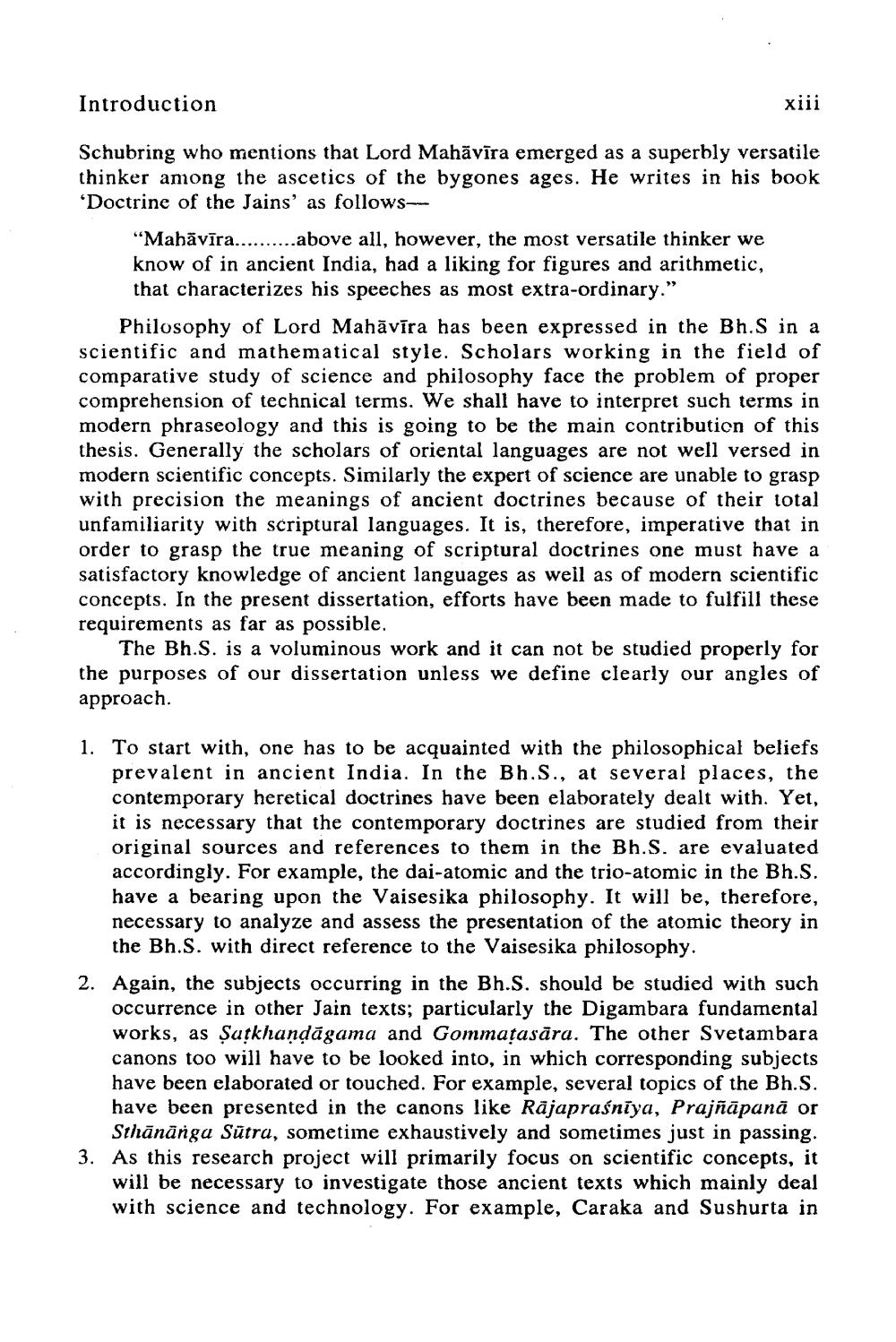________________
Introduction
xiii
Schubring who mentions that Lord Mahāvīra emerged as a superbly versatile thinker among the ascetics of the bygones ages. He writes in his book 'Doctrine of the Jains' as follows
"Mahāvīra..........above all, however, the most versatile thinker we know of in ancient India, had a liking for figures and arithmetic, that characterizes his speeches as most extra-ordinary."
Philosophy of Lord Mahāvīra has been expressed in the Bh.S in a scientific and mathematical style. Scholars working in the field of comparative study of science and philosophy face the problem of proper comprehension of technical terms. We shall have to interpret such terms in modern phraseology and this is going to be the main contribution of this thesis. Generally the scholars of oriental languages are not well versed in modern scientific concepts. Similarly the expert of science are unable to grasp with precision the meanings of ancient doctrines because of their total unfamiliarity with scriptural languages. It is, therefore, imperative that in order to grasp the true meaning of scriptural doctrines one must have a satisfactory knowledge of ancient languages as well as of modern scientific concepts. In the present dissertation, efforts have been made to fulfill these requirements as far as possible.
The Bh.S. is a voluminous work and it can not be studied properly for the purposes of our dissertation unless we define clearly our angles of approach.
1. To start with, one has to be acquainted with the philosophical beliefs prevalent in ancient India. In the Bh.S., at several places, the contemporary heretical doctrines have been elaborately dealt with. Yet, it is necessary that the contemporary doctrines are studied from their original sources and references to them in the Bh.S. are evaluated accordingly. For example, the dai-atomic and the trio-atomic in the Bh.S. have a bearing upon the Vaisesika philosophy. It will be, therefore, necessary to analyze and assess the presentation of the atomic theory in the Bh.S. with direct reference to the Vaisesika philosophy.
2. Again, the subjects occurring in the Bh.S. should be studied with such occurrence in other Jain texts; particularly the Digambara fundamental works, as Satkhaṇḍāgama and Gommaṭasāra. The other Svetambara canons too will have to be looked into, in which corresponding subjects have been elaborated or touched. For example, several topics of the Bh.S. have been presented in the canons like Rājapraśnīya, Prajñāpanā or Sthānānga Sutra, sometime exhaustively and sometimes just in passing. 3. As this research project will primarily focus on scientific concepts, it
will be necessary to investigate those ancient texts which mainly deal with science and technology. For example, Caraka and Sushurta in




